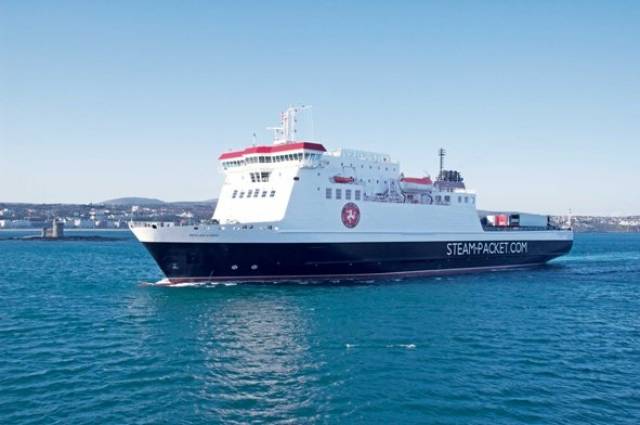#FerryInvestment -The Isle of Man Steam Packet Company has set out its vision for the future of services that includes investment of £170m in new vessels, port facilities and increased year-round passenger capacity.
Also as part of plans to improve ferry services are fare reductions, more special offers and a new frequent traveller scheme.
The Steam Packet will invest in two new vessels and will commit to retaining Ben-my-Chree to provide comprehensive passenger and freight back-up to the fleet.
Late last year Isle of Man Government announced it was considering the future of strategic sea services for the Island. The current User Agreement is due to end in 2026 and the Steam Packet Company has now outlined its vision for continuing to provide services beyond that date.
The details were presented to members of Tynwald on Tuesday and released to the public the same day. They are currently available to view online at http://goo.gl/SwDjOw and the Steam Packet Company is arranging for a printed version to be delivered to homes and businesses Island-wide with the Isle of Man Courier in June. Copies will also be available from the Ferry Travel Shop at the Sea Terminal in Douglas.
It is hoped the offer can be taken to July Tynwald for debate as, the earlier a decision is made, the sooner investment can begin and residents, visitors and businesses start to benefit.
Steam Packet Company Chief Executive Mark Woodward said: ‘We are not just a company which serves the Isle of Man; we are part of the Manx community. Our management team lives and works here, we employ more than 300 Isle of Man residents and we spend significant sums in the local economy. As part of the Isle of Man, our interests are fully vested in what is best for our Island.
‘Since the start of the User Agreement there has been major private investment in vessels, much lower fares (halved in real terms) with improved offers and availability, and significant marketing each year to promote the Isle of Man.
‘We want to consolidate these benefits and provide a platform for further investment and improvements in service delivery for another generation. If a new Strategic Sea Services Agreement, to guarantee services beyond 2026, can be reached this year we will bring forward our planned investment.’
If an agreement is made this year, the Company is committed to delivering a replacement for Ben-my-Chree by 2019/21 and Manannan by 2022/23. MV Arrow would be retained as freight back-up until Ben-my-Chree is replaced, after which time the Ben would become the Company’s permanent third vessel. This gives the fleet comprehensive passenger and freight back-up, as well as additional capacity and self-sufficiency during the TT and Festival of Motorcycling.
The Company would increase passenger and freight capacity year-round to meet the needs of a growing population and would also guarantee that more special offer seats are available each year. A new frequent traveller scheme would be introduced and is expected to benefit 10 times more passengers than the previous scheme which was discontinued some years ago.
There would also be an agreement for the Company to share extra revenue growth, above an agreed threshold, to fund additional low fare and marketing initiatives. This would mean that a proportion of profits would be ring-fenced and used to target specific potential growth areas of the visitor economy or other initiatives aimed at growing passenger numbers.
The offer also includes the retention of the Manx RPI cap on standard fare increases, a commitment to formal service reviews every three years and a promise to publish Irish Sea fare comparisons every year.
Mr Woodward added: ‘Unlike some ferry firms servicing island communities, the Steam Packet Company does not and will not require any government subsidy. We meet the costs of delivering our services ourselves. We will do this while providing guaranteed standards and levels of service and it is we, not the Government or Manx public, that take all the commercial downside risk of doing this.
‘We look forward to further discussions with the Isle of Man Government and the Manx public about the future of Island sea services.’
To read the proposal visit http://goo.gl/SwDjOw
































































